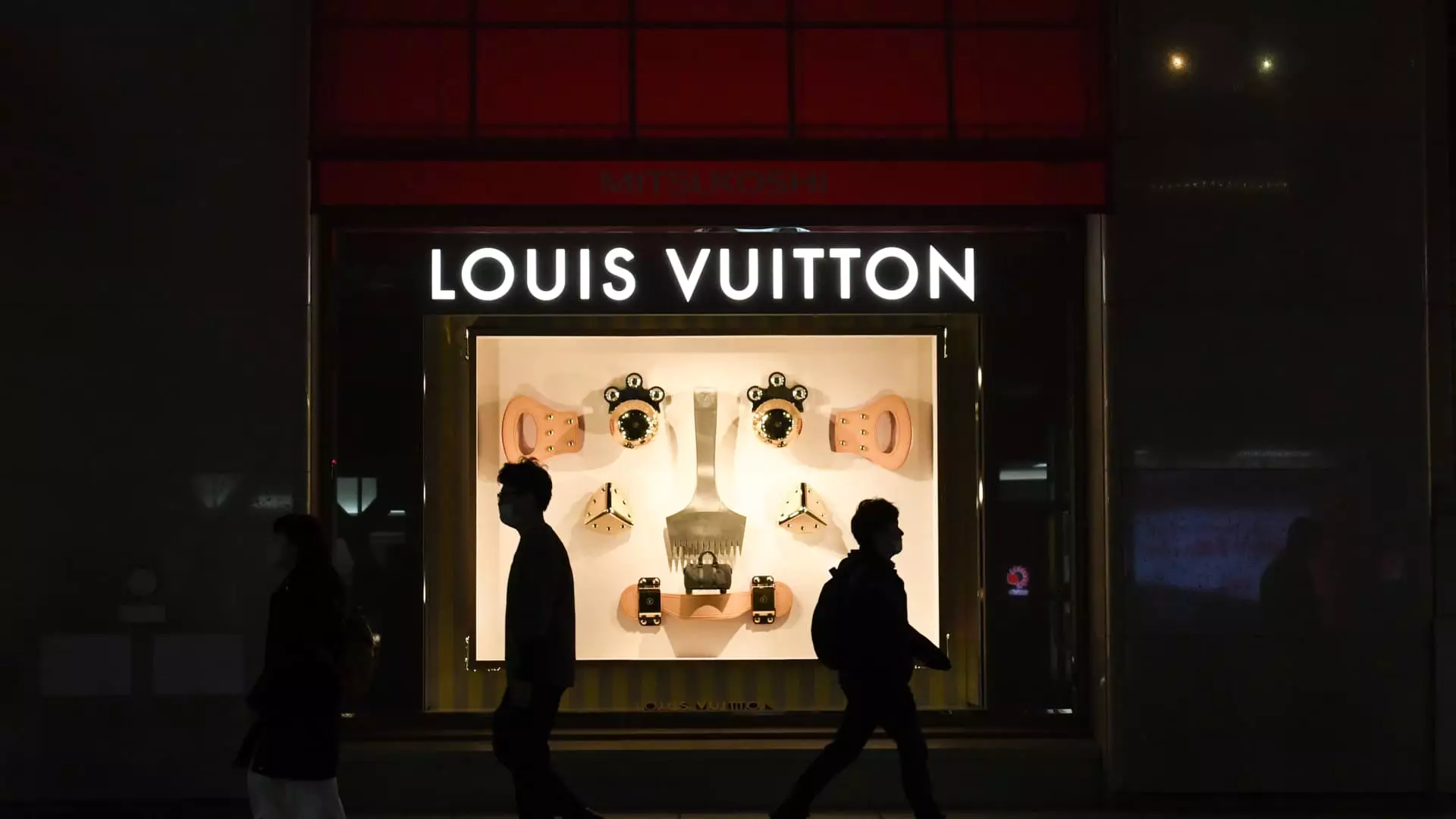The luxury goods market is often viewed as a bastion of resilience in the unpredictable world of finance, but the recent 8% drop in LVMH’s stock raises serious questions about that assumption. This decline, marked by a reported 3% year-on-year decrease in first-quarter sales, has not merely shaken LVMH but ignited panic across the entire luxury sector. The unexpected dip allowed Hermès to momentarily snatch the title of the world’s largest luxury firm, underscoring a significant shift in consumer sentiment and market dynamics.
LVMH’s performance has set off a domino effect, casting shadows over rivals such as Kering and Burberry, which also saw declines of 2.5% and 4.4% respectively. The cascading effect of LVMH’s disappointing figures reflects the growing anxiety surrounding the broader economic landscape. Investors who previously felt insulated by the luxury brand’s timeless appeal are now grappling with a harsh reality; even the seemingly steadfast high-end market is vulnerable to economic fluctuations.
Anatomy of Decline: What Went Wrong?
LVMH’s poor sales performance can primarily be attributed to two key sectors: wines and spirits, alongside fashion and leather goods—each experiencing a stark decline. The luxury conglomerate noted a staggering 9% drop in wines and spirits, predominantly driven by diminished demand in crucial markets like the United States and China. Factors such as geopolitical tensions and shifting consumer priorities are proving detrimental to what was once a remarkably resilient product segment. In a world where cognac has long been revered as a status symbol, the inability of LVMH to attract buyers in its major markets espouses a troubling narrative about consumer behavior amidst economic uncertainty.
Moreover, the fashion and leather goods division, which accounts for a substantial 78% of LVMH’s profits, suffered a 5% setback. The numbers reveal more than just sales figures; they indicate a potential shift in consumer affinity, with even affluent buyers acting more cautiously in their purchasing choices. This growing wariness amongst the elite highlights the fact that luxury brands are not merely immune to market disturbances; they are deeply intertwined with broader economic sentiments.
Interestingly, while Europe managed to report a minor growth of 2%, the vast majority of regions struggled, with Asia excluding Japan plummeting by 11%. This disparity points to a troubling trend of regional volatility that could undermine luxury’s so-called ‘global shield.’ The affluent are being forced to think twice; are they prioritizing luxury purchases amid rising economic strain?
Analysts Weigh In: The Future Looks Grim
Market analysts seem to share a bleak outlook concerning LVMH’s future performance. Analysts at Citi have described the sales report as offering “not much to cheer for.” When the firm expects that the forthcoming quarters will not see major revenue improvements, it signals a troubling consensus that elevated U.S. economic uncertainty could lead to a rocky road ahead.
Jefferies, in a move indicative of growing caution, trimmed its target price for LVMH stock significantly—from €670 to €510. This recommendation serves as a warning shot; the luxury sector may not be as insulated as many investors were led to believe. Economic forecasters are particularly wary of U.S. President Donald Trump’s erratic trade policies, which serve as a double-edged sword for luxury firms like LVMH. The looming threat of tariff-induced economic downturns raises significant concerns regarding consumer demand in the critical U.S. and Chinese markets.
Repercussions and Responses: Navigating a New Landscape
In light of these events, LVMH’s Chief Financial Officer Cecile Cabanis attempted to soothe investors by stating that the group had not witnessed a “major change in trend.” However, this assertion appears more reactive than proactive. As uncertainty grows, it is precisely LVMH’s aspirational clientele—traditionally deemed resistant to economic fluctuations—who may become the brand’s Achilles’ heel. Cabanis herself acknowledged that downturns affect high-end purchases like wines and spirits and hinted at possible price adjustments to combat inflation and currency fluctuations.
The prospect of luxury brands needing to increase prices to maintain margins presents a complex dilemma: While high-end labels may ultimately be more insulated from the immediate effects of tariffs, the question remains—how long can they maintain this buffer before alienating their core consumer base? The fear that elevated prices could deter discerning buyers adds yet another layer of complexity.
As we continue to observe the unfolding narrative of luxury brands like LVMH, it is increasingly clear that the elegance and prestige of high-end goods are no longer guaranteed in an uneven economic landscape. The luxury market doesn’t just require a shift in strategy; it demands a profound reevaluation of consumer values and market realities.

